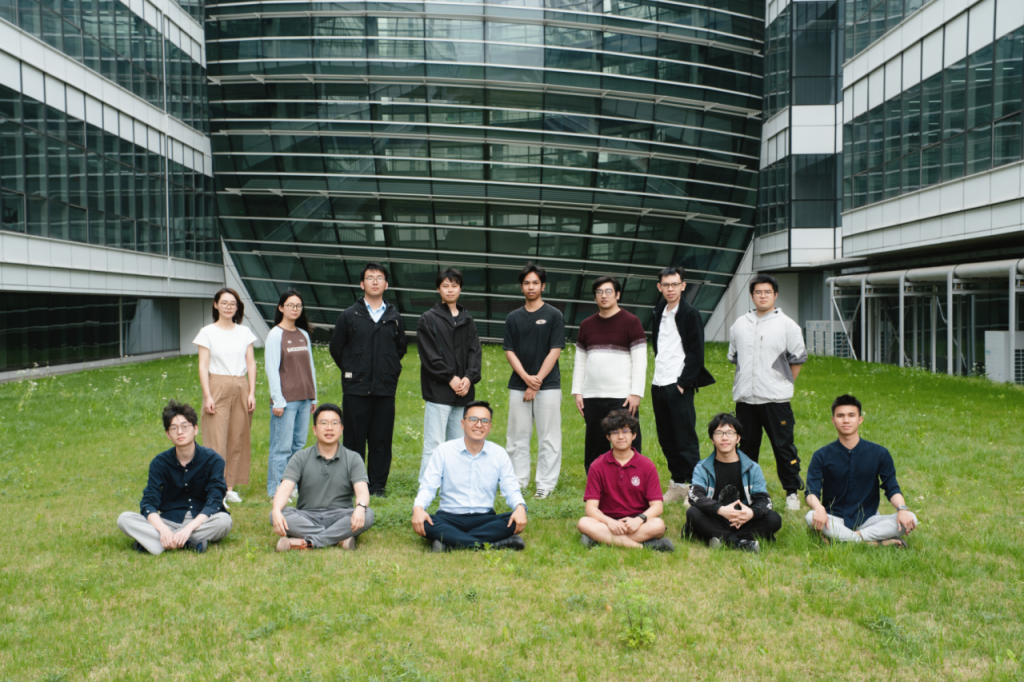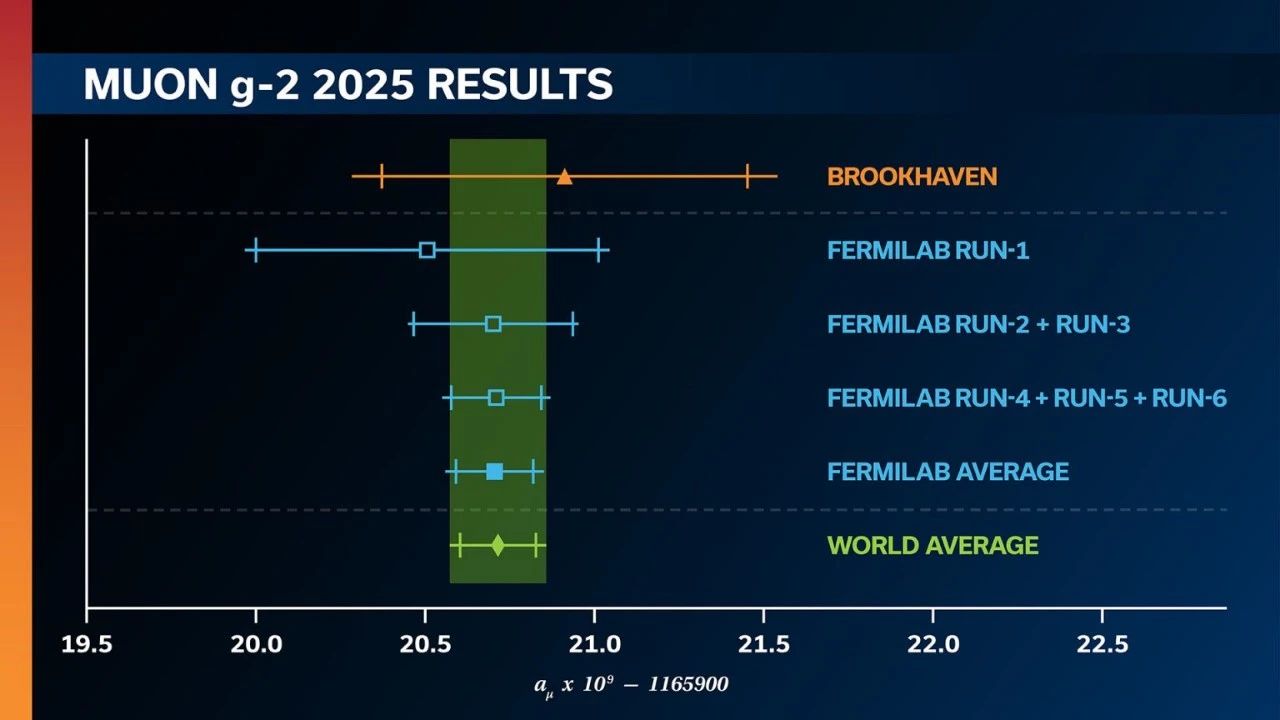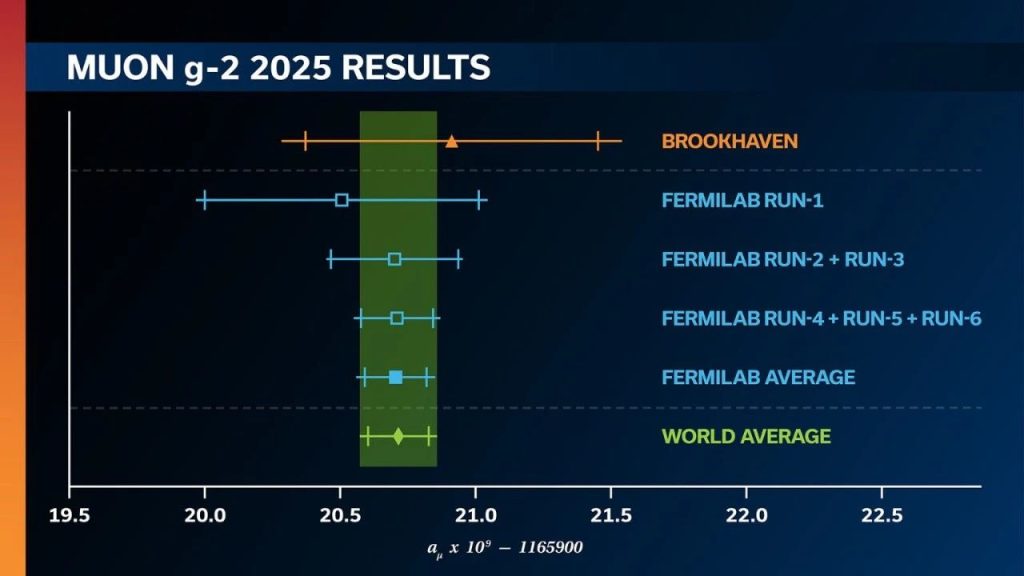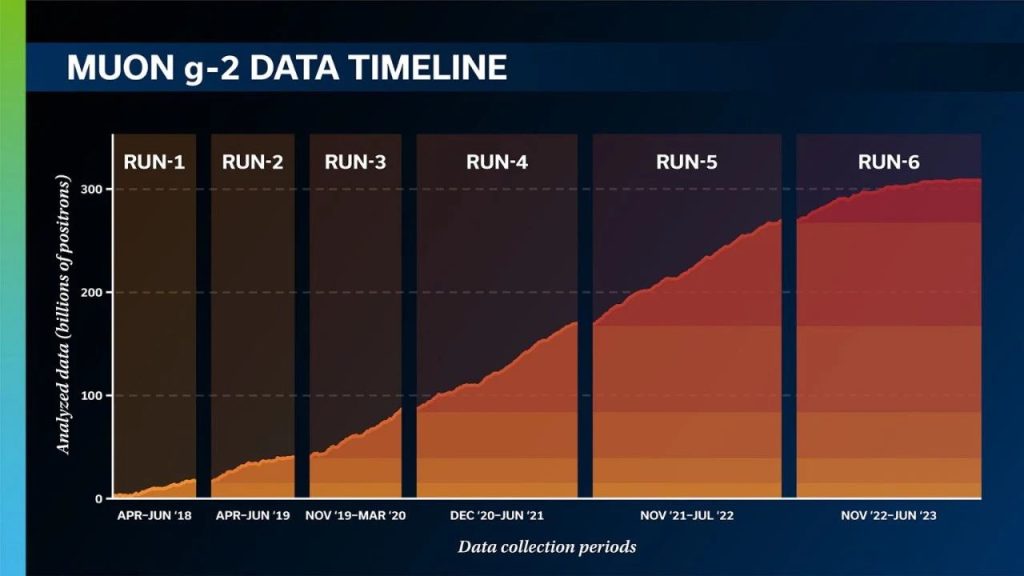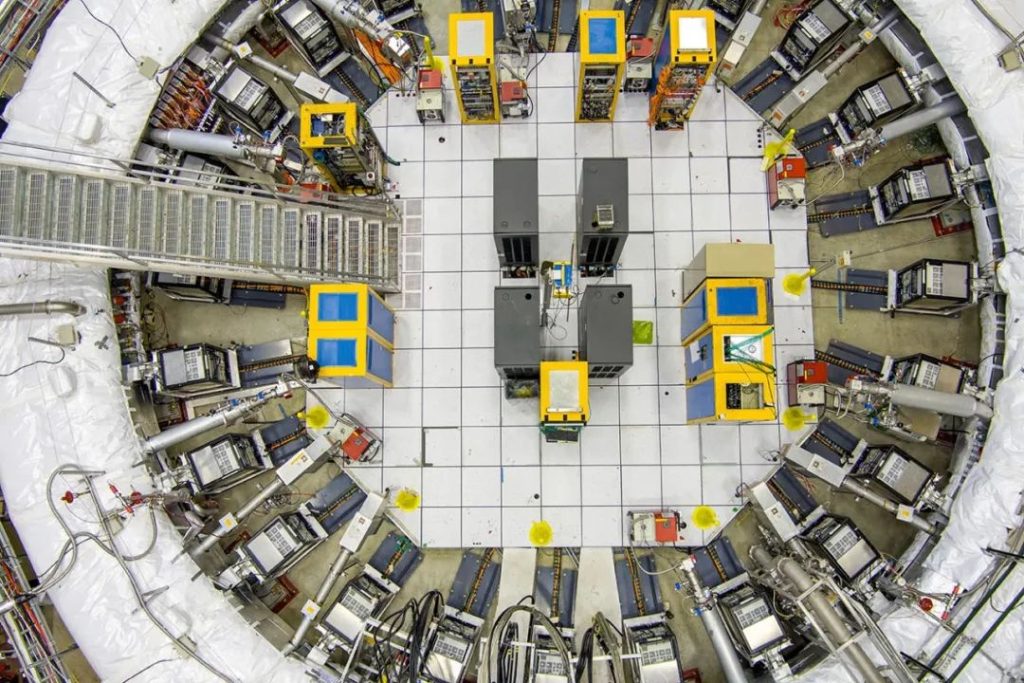
The Fermilab Muon g-2 experiment announced its final results at 11:00 PM Beijing time on June 3. The latest measurements not only closely match the results published in 2021 and 2023 but also achieve an unprecedented precision of 127 parts per billion (ppb), surpassing the initial goal of 140 ppb. This marks the most precise measurement of the muon anomalous magnetic moment to date. Although recent theoretical calculations have reduced the indications of new physics in the muon g-2, the high-precision experimental results still place strong constraints on future extensions of the Standard Model. The team from Shanghai Jiao Tong University played a key role in precisely measuring the muon spin precession frequency and its beam dynamics corrections in this experiment. Specifically, within our group at TDLI, PhD student Yonghao Zeng independently analyzed the anomalous precession frequency and used Gaussian Process Regression to model beam dynamics effects. Postdoctoral researchers Siew Yan Hoh and Yusuke Takeuchi contributed to beam dynamics corrections, including pitch and differential decay corrections. Our results have been accepted for publication in Physical Review Letters (PRL) for review and can be accessed on https://arxiv.org/abs/2506.03069.
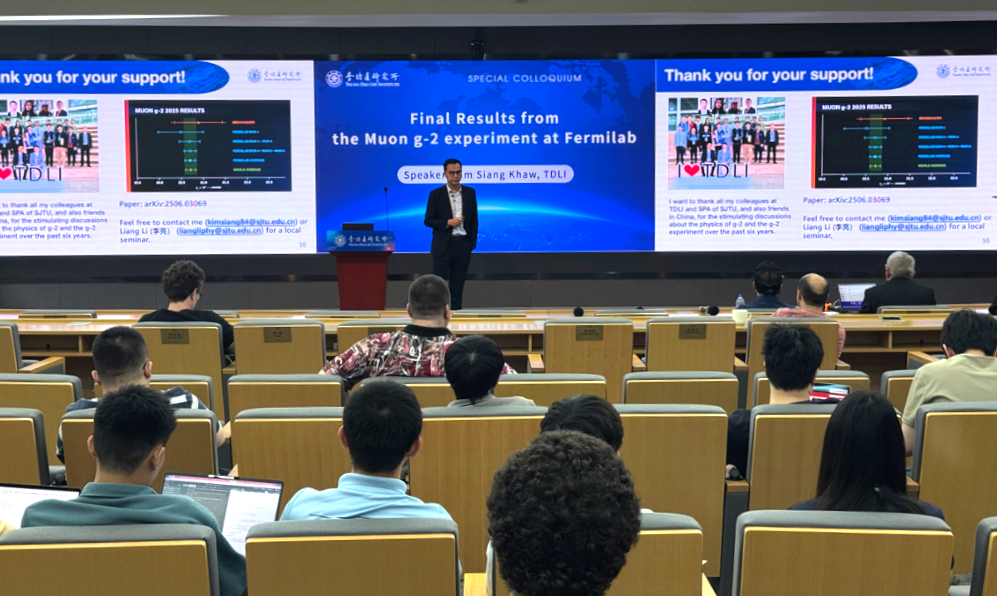
Kim Siang Khaw presented the final results at a special colloquium titled “Final Results from the Fermilab Muon g-2 Experiment.” He highlighted that the Standard Model of particle physics still contains many unresolved mysteries. Experimentalists use three main approaches—direct detection, direct production, and indirect measurements—to search for unknown fundamental particles and forces. The precise measurement of the muon anomalous magnetic moment is an example of indirect measurement. By increasing experimental precision, researchers can confirm the contributions of different interactions in the Standard Model to the muon g-2. Any mismatch between theory and experiment may point to new physics beyond the Standard Model.
The Fermilab Muon g-2 experiment was proposed in 2008, approved in 2012, and completed setup and trial runs in 2017. From 2018 to 2023, the experiment collected an astounding 100 billion muon decay events. The measurement process includes three main steps: (1) injecting polarized muon beams into a superconducting storage ring, (2) measuring the magnetic field in the muon storage area, and (3) determining the muon spin precession frequency. In addition to improving magnetic field and spin precession measurements, the experiment also used a radio-frequency electrostatic quadrupole during Run-5, which greatly reduced coherent beam oscillation amplitudes and lowered systematic bias by a factor of 10. At 11:40 PM on May 20, 2025, over a hundred collaboration members witnessed the unblinding of the analysis results. The final measurement not only confirmed the consistency of the 2021 and 2023 results but also achieved a record-breaking precision of 127 ppb. This value is likely to become a widely cited benchmark in the field.
